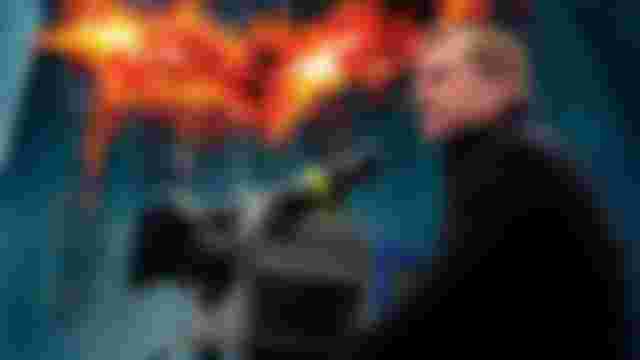Even amidst the COVID scare that grips this dear planet of ours, that guy in the title still continues to prove that he is a director that must not be belittled. He made and launched Tenet, the greatest sci-fi, time-travel flick to date.
But such a success is only a minor element of the greatness that he achieved throughout the years. Because his directorial portfolio is so filled with dazzles and brilliance that we might think of him as the modern Da Vinci if we were to take filmmaking as something similar to the Renaissance.
Why is Christopher Nolan one of the greatest, if not the absolute greatest director ever? The following reasons would be the best answers to that question.
He never went to film school, yet his directing skills are superb.
If you watch some of his interviews, you will probably come across his statement that he never had formal education with filmmaking. All he did was start very early in his childhood, filming scenes within his neighborhood with his dad’s super-8 camera.
By honing his craft day by day as he grew up, he obtained the knowledge he earned as the great director that we know today. What he built up on as a filmmaker is deep brainstorming and analysis. While most directors focus on how to make a good movie with filmmaking technicalities, Nolan focused on telling a compelling story by delving deeply into human thought and emotions.
One of the main contributory factors that further supplemented his greatness as a filmmaker is the presence of his brother, Jonathan Nolan. Also one of the most recognizable writers in Hollywood, his younger brother is also very instrumental to the success of The Dark Knight.
According to Nolan, the fact that he is right-handed and his brother is left-handed really made their jobs easier. They can work seamlessly without interfering each other’s scribblings as they work on the same story at the same sheet of paper. Now, that’s really one trivia that we can find so amusing.
He doesn’t depend on visual effects to make breath-taking scenes.
He claims to have been greatly inspired by Star Wars. But as he dug his niche in directing, he refrained from relying too much on computer imagery which was mostly favored by George Lucas, the creator of Star Wars. In the majority of the scenes of Nolan’s movie, all you see are visuals generated by practical effects and real, hand-made props.
Whenever possible, he will utilize real objects from the real-world to truly come-up with cinematic artistry – the kind that audience will in awe of on the big screen for many generations. If something needs to explode, he will let it explode, if something needs to burn, he will literally burn it.
There are even scenes in his movies in which entire buildings are needed to be bought, rebuilt, and refurbished, just to destroy them again in mere seconds, just for the sake of authenticity and production value.

There are a few times when he makes compromises though. For instance, there is a scene in The Dark Knight when Batman needs to glide through the cityscapes of Hong Kong to apprehend a criminal. Mr. Nolan did his very best to secure permits and court some business owners to keep the lights on even when its late on that particular evening when they were filming that scene, just so Batman can be beautifully captured as he glides downwards into that criminal’s lair.
Unfortunately, Hong Kong is one of the strictest cities in the world in terms of energy-consumption efforts. He failed on that undertaking, reason that he resorted into digital after-effects to achieve the cinematography he needed in which buildings are well-lit on that very important scene.
His movies have very deep psychological undertones.
If you’ve seen Inception, The Prestige, and Interstellar, there will never be the slightest chance that you’ll disagree with this statement. Viewers who are categorized as “easy-watchers” complain that almost half of Christopher Nolan’s movies are devoted only to the explanation of how the movie works, which to them, is a complete waste of time.
In the eyes of critics however, such a method is really brilliant, because it redefined the way movies are supposed to be watched. Because of his directing and story-telling style, moviegoers will be motivated to think and analyze as they devour the narrative of the film.
Aside from being very psychological in nature, his movies are also very scientific. In Interstellar, he was even known to collaborate deeply with scientist Kip Thorne, making very sure that the science behind the movie is as close to being accurate as possible.
Although it is impossible to just utilize practical effects on that movie, Nolan made it sure as well, that the computer imagery projected on screen should be very close to what an actual black hole and gravitational anomalies would really look like in space.
Visuals are not his main reason for that. On the contrary, his goal for that undertaking is to stimulate the audience’s imagination and to challenge their movie-viewing sensibilities.
He doesn’t utilize digital cameras just for the sake of modernity.
Before 2008, the IMAX camera was only used for documentaries and other non-major Hollywood projects. But when Mr. Nolan started using it in The Dark Knight, many other directors followed the same path.
His reason for using such a bulky and noisy camera is that with IMAX, the best possible video resolution can be achieved. Because of his achievement with The Dark Knight, which is declared by many critics as the best superhero film of all time, the IMAX camera was further enhanced by its manufacturers just to cater to its popularity among other film directors.
When you watch the movie on Blu-Ray or DVD, you may notice that the aspect ratio of the screen changes from scene to scene. That’s because it’s the only way to truly convey IMAX imaging on a small screen.

Years from now, when The Dark Knight gets re-released in theaters (I’m sure it will happen… it’s got to happen), we will surely become witnesses to how great it can still be, even when pitted against modern movies whether they’ll be comic-book movies or not.
Today, he still actively promotes the idea that film cameras are still the best cinematic tools around. He claims that until a digital camera that can surpass the imagery that only film can project gets invented, traditional video capturing should still be the best option for filmmakers.
He has never made a bad film… yet.
Years ago, while still in his early 30s, he has already made movies that are highly praised by critics and fans alike. In his interviews, he often recalls those days in which he had his fair share of rejections from movie studios and producers that he approached during those moments when he was still a struggling director.
But by working on his own, with a very limited budget, and with a little help from his friends, he was able to make masterpieces like The Following – his first feature-length film, and Doodlebug – one of his very first short films.
Years later, he made Memento – a film about an amnesiac guy that greatly revolutionized the way non-linear story-telling on film is utilized. Not too long after that, he got the attention of major filmmaking studios which led him to Batman Begins.
A few more years rolled on, and the name Christopher Nolan became synonymous to “greatness” and “legendary” when directing and movie-making is the topic of the discussion.

